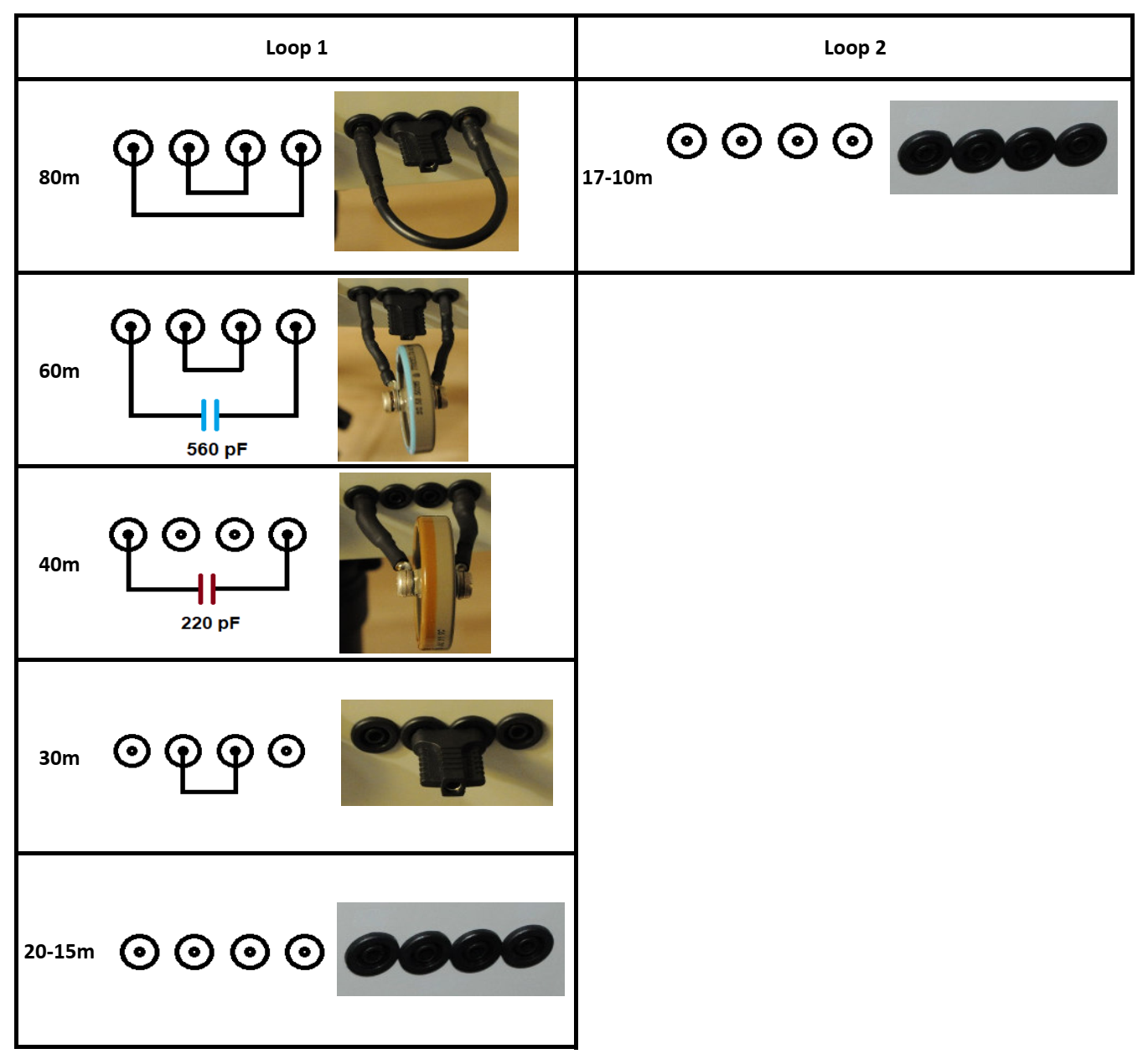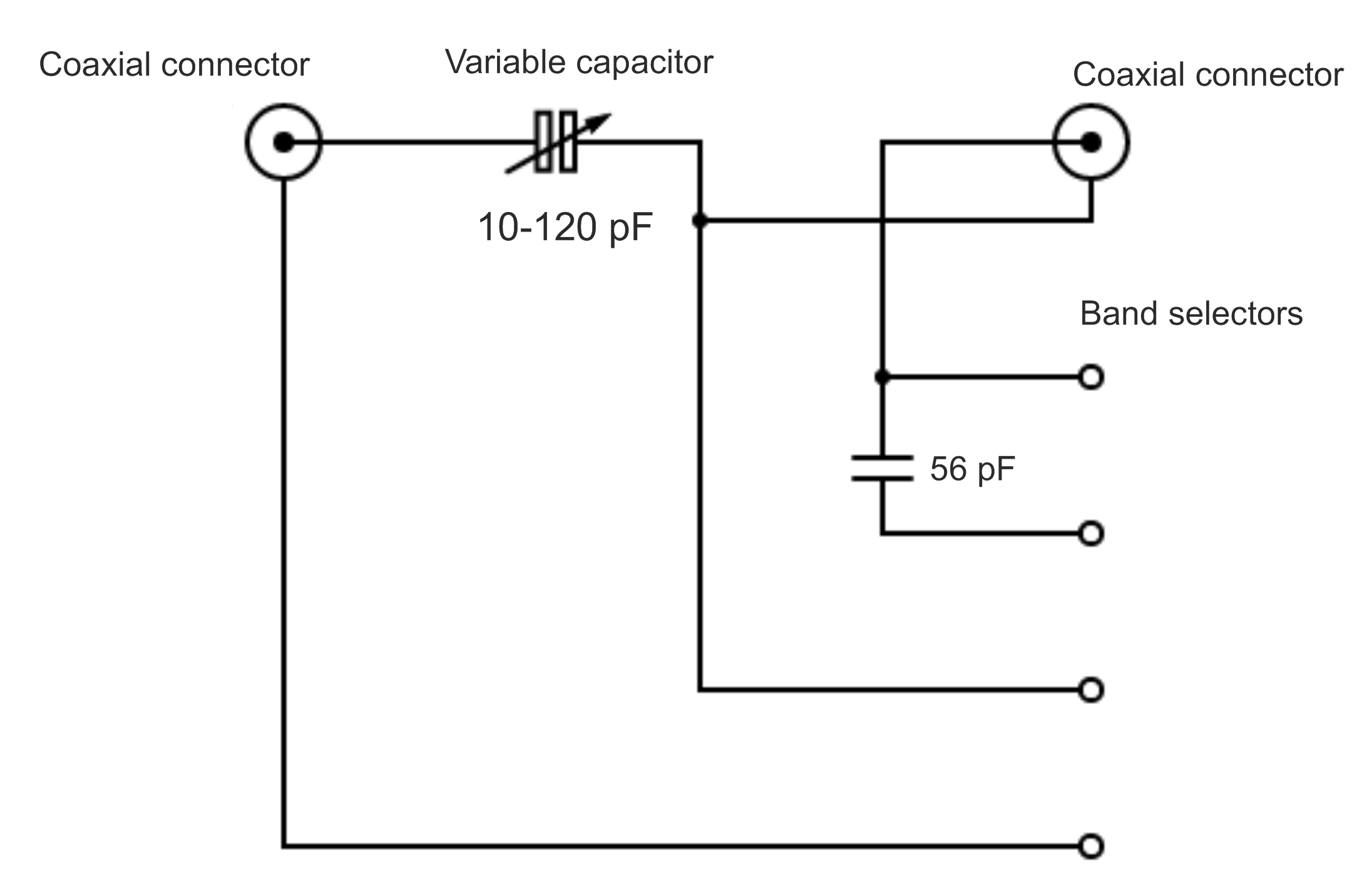Introduction
This MLA antenna is based on my previous project My 80-15m MLA antenna with “virtual” capacitor. There are 2 interchangeable loops now. Bigger (1m diameter) is for 80-15m and smaller (0.7m diameter) is for 17-10m. I also added limit switches, new band options, improved the remote control, and tweaked the overall design.
- MLA – BIG Loop 1 (about 1m diameter)
- MLA – SMALL Loop 2 (about 70cm diameter)
- MLA v2 – Inside
- MLA v2 – Limit switch
- MLA v2 – Side view
- MLA v2 – Side view
Band options
The bands are selected using jumpers. In addition to the jumpers, high voltage external capacitors of 220pF and 560pF are used. The band selection scheme is shown in the figure bellow.
Remote tuning
The remote control is almost an essential part of the MLA. Because of the need for very precise tuning of the capacitor, it is difficult to tune manually. In addition, a hand near the antenna affects the tuning frequency. This antenna is tuned using a Nema 11 stepper motor with a 1:100 gear ratio, the end positions are treated with limit switches. The control box is connected to the motor via a networking cable. It has the possibility of coarse and fine tuning, the display shows the position of the capacitor and the approximate tuning frequency with the possibility of calibration. Hardware includes an input power filter, Arduino Nano Every microcontroller, DRV8825 stepper motor driver, rotary encoder, buttons, LEDs and TFT display.
The disadvantage of stepper motors with gearbox is the gearbox backlash, which must be solved in software. In SW I add extra steps when changing direction to compensate this backlash. If you are interest in my SW, I will try to make public version in future.
- OK5MAX MLA remote
- OK5MAX MLA remote – inside
- OK5MAX MLA remote – panel
- OK5MAX MLA remote – connectors
Conclusion
This 100W MLA antenna is ideal for radioamateurs who cannot have their own antenna located outdoors. I had a lot of fun with it, especially on 80m, on my previous QTH where there was no option to place a wire antenna. It’s more suitable for CW/FT8 operation, but I’ve also made contacts with it on SSB, but on 80m it already has a small bandwidth and tuning can be more difficult. The antenna can be easily disassembled and stored e.g. under the bed. The frequency tuning indicator is useful, on lower bands it is rather approximate, the frequency is affected by nearby metal objects. It is necessary to keep away from these objects, they may even make it impossible to tune the antenna. For this reason it is not possible to operate the antenna e.g. on a balcony with a metal railing. Minimum distances from the antenna must be kept in relation to the power used.











